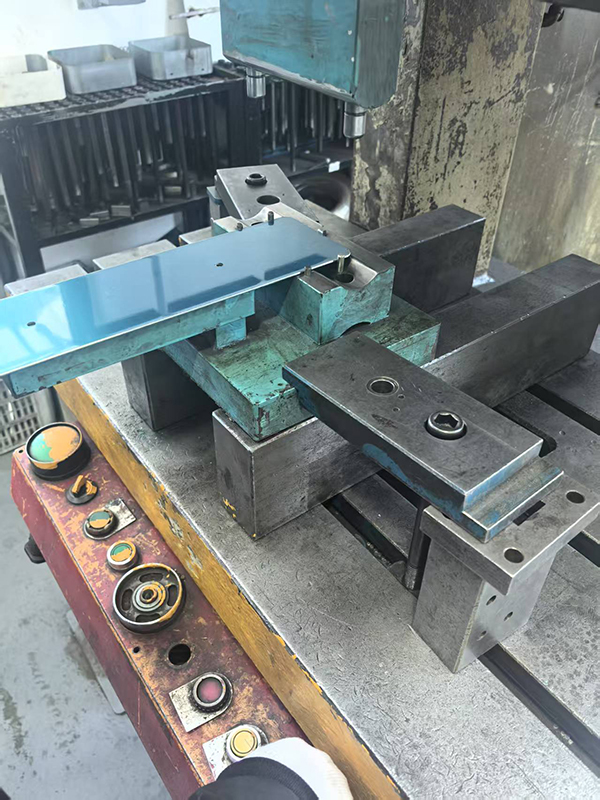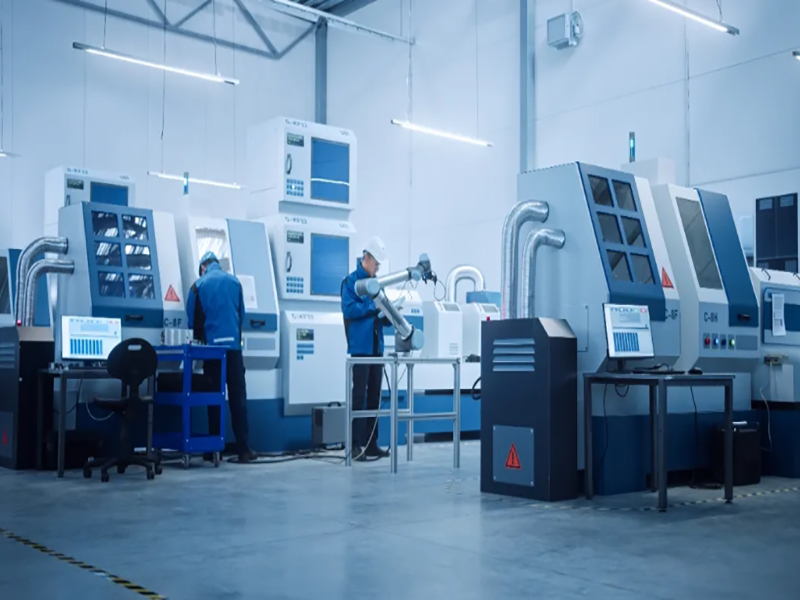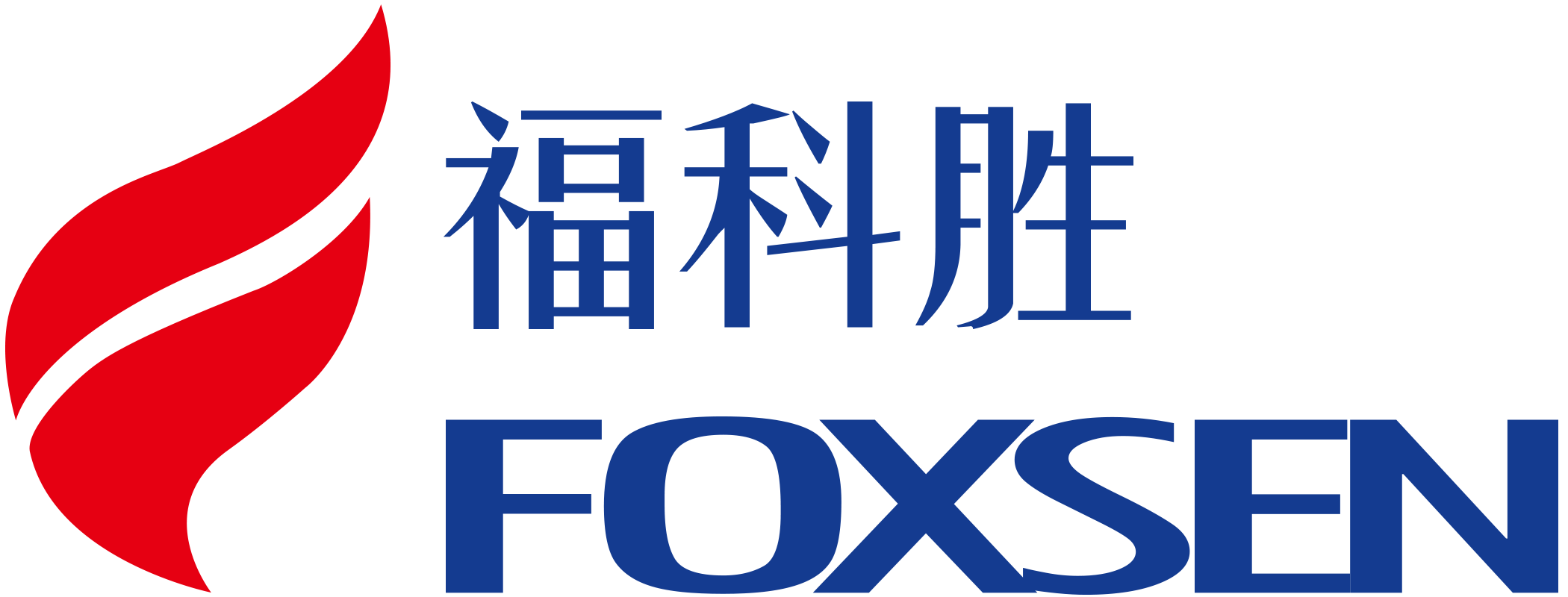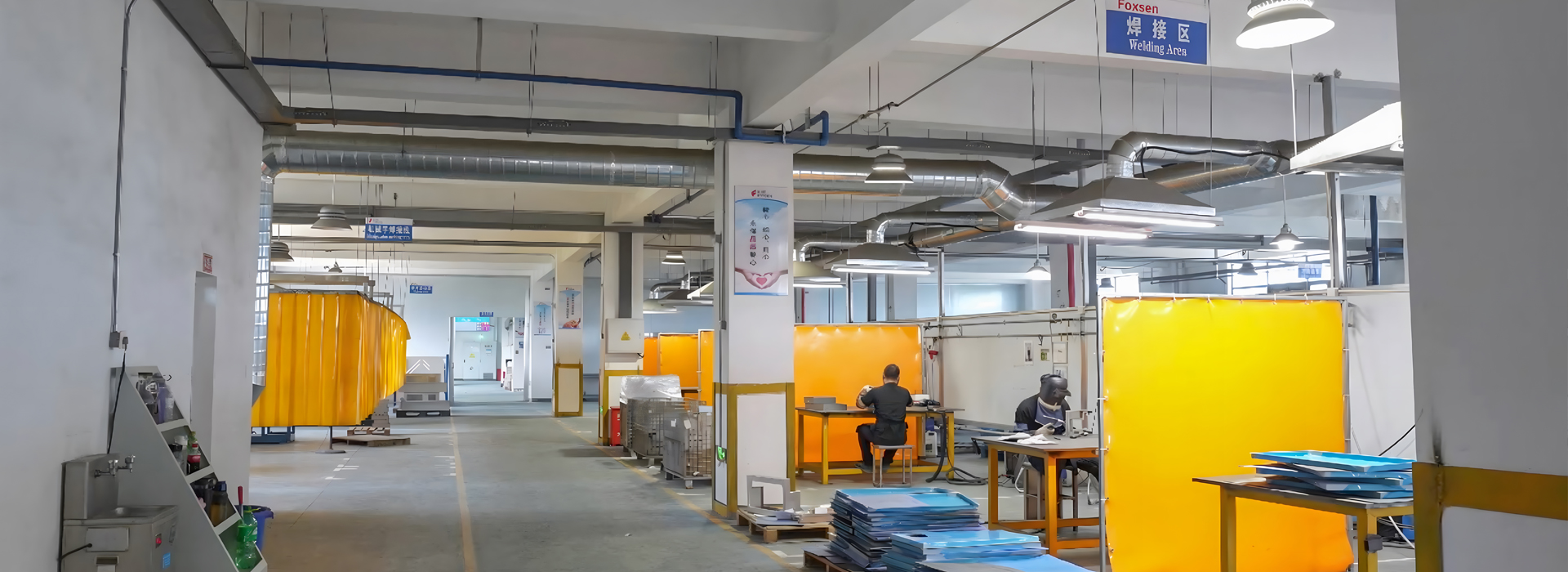Most of the commercial electrical appliances are customized products for customer needs. With the development of the market economy and the increase in personalized needs, the competition in the commercial appliance customization market is becoming increasingly fierce. The processing of sheet metal parts for commercial products generally involves multiple processes, including the application of various CNC processing equipment, such as CNC bending machines, laser cutting machines, CNC shearing machines, CNC punching machines, etc. Among them, CNC punching machine processing technology plays a vital role in shortening product development cycles and improving sheet metal processing capabilities. However, when producing special structures and complex parts, its high processing costs and inefficient stamping efficiency and inability to handle large-scale production have also brought troubles to the factory's efficiency improvement. Most commercial sheet metal parts are produced using CNC processing equipment. The traditional process is labor-intensive, frequently transported, and inefficient, which does not meet the needs of efficient development of enterprises. In order to solve these problems, it is necessary to conduct a detailed study on the characteristics of sheet metal CNC processing technology, analyze the problems existing in the production process, and propose corresponding solutions. In order to further improve the processing efficiency of CNC punching machines under small batch and multi-variety orders, based on existing technical conditions and combined with the application of MES information management system, the processing of commercial sheet metal can realize the upgrade of full CNC processing mode. In the application process, the process software system is gradually intelligent, and can automatically perform laser cutting or CNC mold processing process prompts and selection. The application of these technologies has greatly improved the operability of CNC programming and greatly improved the production efficiency of the original technical means. In the case of improved sheet metal processing quality, it is also necessary to analyze its characteristics and complete the optimization and improvement of processing technology, so as to improve the overall processing efficiency of commercial sheet metal parts. With the improvement of product quality requirements in the consumer market, the quantitative production defects of high-consumption molds are becoming more and more obvious. It is necessary to carry out research, optimization and improvement of its processing technology based on the characteristics of CNC processing, so as to improve the overall processing efficiency of commercial sheet metal parts.

Technical characteristics of sheet metal CNC processing
According to different working methods, CNC punching machines can use the external shared channel of the system program to obtain the order processing program and convert it into machine operation instructions, so as to perform corresponding CNC punching processing on raw materials. From the perspective of process technology, compared with traditional stamping die processing technology, CNC punching processing technology has typical technical characteristics of high precision and high flexibility, which can be summarized into three points.
Single punching processing technology
The operation can be completed using punching processing technology to realize the processing of various shapes of holes, such as square holes, round holes and other different types of holes, which can be completed by small hole punches of different specifications and models.
Continuous punching processing technology
In the process of processing large and small rectangular frames, the large rectangular contour feature can be completed by continuous overlapping punching of the cutter die punch. From the perspective of feature contour and size specifications, this method is much more flexible than single punching processing, and can process larger die holes or edge shapes, which is conducive to adapting to the switching processing of different types of parts.
Optimization of sheet metal CNC processing technology
With the continuous development of CNC technology and the application of information-based manufacturing execution systems, CNC program information can be centrally processed through internal shared channels, effectively improving the output efficiency of programs. From the overall perspective of the sheet metal CNC processing field, it is not only the innovative application of information process management, but also the performance and process technology of sheet metal processing equipment are constantly upgrading, the product structure design is more reasonable, the programming software technology is constantly iterating, and the product quality is further improved.
Optimizing sheet metal CNC processing technology
As one of the most important processing methods for commercial sheet metal forming, CNC punching machine processing mainly relies on the punching characteristics of the mold to match the structural characteristics of the parts, and the most commonly used method for CNC mold processing is punching processing. For parts with more complex structures, the overall processing efficiency of traditional CNC punching methods is low, and it is easy to have quality problems such as burrs and flanging, which makes the product quality unable to meet customer requirements.
At present, the problem of low production efficiency faced by sheet metal CNC processing is closely related to the complex process route of parts processing. In order to better meet the actual needs of industry development, it is necessary to optimize the existing process route. In order to improve the delivery efficiency of customer orders, CNC programming usually requires that multiple small orders of parts of different sizes and shapes be arranged on a raw material plate for processing. In order to improve the sorting efficiency of parts and reduce the problem of parts falling off during processing, CNC programming can adopt the process of trimming + micro-connection, use trimming dies to separate individual parts to ensure product quality, and use micro-connection points to ensure that the overall structure of the sheet metal is more stable during punching and moving. The specific width of the micro-connection point needs to be determined by the material thickness, but the overall width should be kept at 0.25-0.5mm. When using the trimming die, the equipment process parameters should be matched, and a die width of 5mm or 7mm can be selected to meet the part processing specifications and quality requirements. You can also pre-cut the material with the shearing process, and then use the CNC punch to cut the inner contour to improve processing efficiency.
Introduction of advanced CNC programming technology
As the source of instructions for the operation of CNC processing equipment, the programming management of CNC programs is the basis for ensuring the efficiency and rationality of sheet metal CNC processing. It is necessary to ensure the adaptability and accuracy of the program from the data layer to maintain the stability and quality of the production process, thereby ensuring the smooth progress of the production process and effectively carrying out related work. Combined with the design characteristics, materials and quality requirements of the products, the automated programming software developed by the industry's excellent software system manufacturers is introduced, and the transition from manual programming to automated programming is gradually made, the program generation logic and operating parameters are continuously optimized, and the automation of the overall processing process is driven by offline automatic programming technology, thereby improving the production efficiency of sheet metal CNC processing. The realization of automated CNC programming is the advantage of sheet metal CNC processing technology. Compared with traditional manual programming, it can effectively improve the output quality and output efficiency of the program, and can realize offline automatic programming with no or few people involved, reducing the uncertainty and consistency errors of human intervention. Therefore, to optimize sheet metal CNC processing technology, it is necessary to combine its own development status with database information, develop a programming software system that meets the diversified needs of products, and lay the foundation for the high-quality construction of the CNC processing sector.
Adopting the processing method of parts nesting
After completing the unfolding operation of the parts through CAD software, the parts made of the same material can be arranged on the same raw material for processing according to the production situation. In this process, in order to ensure the processing stability of the overall sheet and the subsequent sorting and classification of individual parts, small connection points can be retained on the edge of each part to ensure the effective connection between different parts and ensure the integrity of the sheet during the punching operation. Generally, the size of small connection points should be controlled within 0.25-0.5mm. Without affecting the quality of parts, try to ensure the overall uniform state to ensure the overall level of the equipment.

When programming the CNC of nested parts, you can use a large knife to punch the edge to reduce the number of punching times, and use a universal punching knife mold to reduce the number of mold changes. At the same time, in order to optimize the processing path management of part layout and reduce the waste of raw materials, a combined layout method is introduced below. Using this layout method, the punching efficiency can be improved by 10% on the original basis. During CNC programming, the regular edges of multiple parts share a CAD contour line, and then the mold cutting method is used to complete the separation of each part; in addition, in the process of arranging irregular parts, the state and specification parameters of the parts are adjusted in time, and the layout and punching processing path after the parts are rotated by a certain angle are considered to reduce the waste and spare parts and improve the area utilization rate of the plate. Under the guidance of this layout processing method, the mold can be efficiently converted, the number of mold switches during the processing process is reduced, and the overall processing efficiency is guaranteed.
When programming and layout of CNC sheet metal processing, layout should be carried out as much as possible according to the existing conventional sheet material size to reduce the generation of scraps. Parts can be programmed with common tool paths and rotating parts, and nesting programming can be used to improve material utilization. At the same time, the inevitable scraps should be reused, and new uses for scraps should be actively developed and found, such as making tooling, consumables and accessories, so as to reduce production costs and reduce material waste in a scientific way of raw material utilization.
Special-shaped mold combination application technology
At present, manufacturers in the field of sheet metal CNC processing technology have begun to focus on the research of CNC processing methods of molds, using special structure mold combinations to improve processing efficiency and solve some existing quality problems in sheet metal processing technology. The most basic of these is to complete the processing of some basic parts through regular edge processing technology, and to improve the hardness and number of uses of the edge through heat treatment and chemical treatment. For example, according to the unified characteristics of the parts, the mold of the corresponding structure is developed to ensure that the parts have no burrs after punching or only have burrs within the quality standard range, so as to reduce the cost of burr processing in the post-process. At the same time, small fillets can be appropriately generated during part design to improve the cross-sectional quality.
Cannibalization is a common process operation method in CNC punching technology. From the perspective of product switching and mold replacement times, the cannibalization process can be said to be an erosion process from point to line, which has a higher flexibility advantage in various contour processing. However, in actual processing, cannibalization punching will produce burrs of varying degrees, which not only affects the processing quality of the product, but also damages the precision of the mold, because the high frequency of using a single mold to process parts will accelerate the wear and dullness of the mold. In order to solve this problem, it is necessary to design and develop special CNC molds according to actual production conditions for batch processing feature structures. For special and irregular complex structure parts, the comprehensive cost can also be evaluated and processed using laser cutting, which will effectively improve the quality and processing efficiency of the parts.
In addition, common special parts structures in production also include various forming features such as flanging holes, shutters, hexagonal holes, long rolled ribs and convex hulls. Based on these structural characteristics, some special structure molds are developed specifically to improve processing efficiency while ensuring the existing quality and precision. For example, a one-time forming hexagonal hole mold can be used in the production of radiator parts with large-scale hexagonal hole processing needs. The flanging hole mold can be processed and formed in one time according to a specific size. Specifically, the application advantages of special molds are mainly: improving the mechanical operation efficiency of the equipment, and being able to simultaneously realize the processing of multiple directions and longer edges under the condition of the same mechanical operation trajectory; improving the overall processing quality of parts, and the one-time forming process can reduce unnecessary connection processing and reciprocating motion, thereby improving the neatness of the edges; effectively preventing secondary processing, and when processing a set of scheduled plates composed of multiple parts, it can effectively avoid repeated edges and connections, and reduce the number of punching and cutting; shortening the equipment preparation time and the number of mold changes. Special-shaped molds usually have higher flexibility and can replace the corresponding punching head, reducing the production time occupied by switching; can improve the service life of the mold, by increasing the effective mechanical operation time of the punch press and the switching use of the punch head, the unit time loss of the mold can be reduced, thereby improving the service life of the mold.





